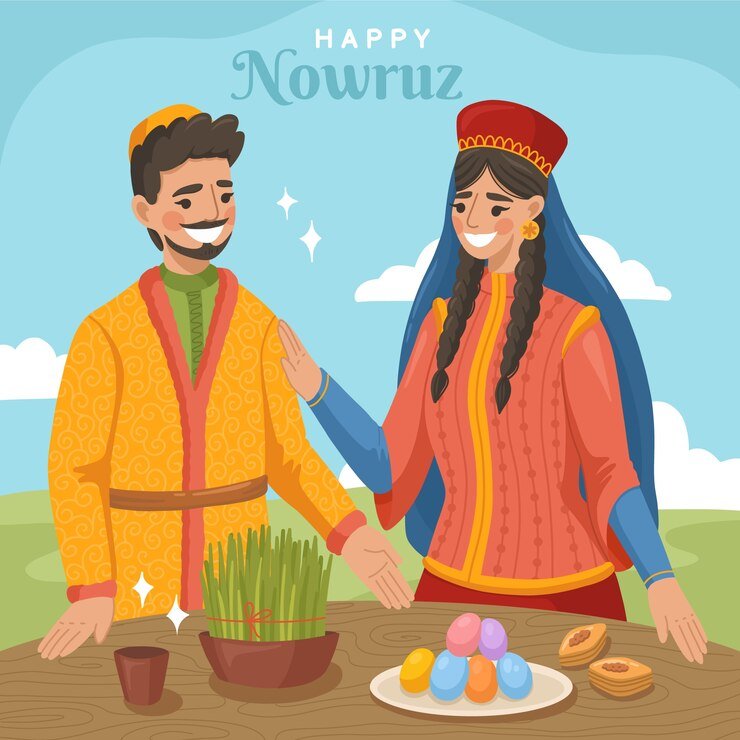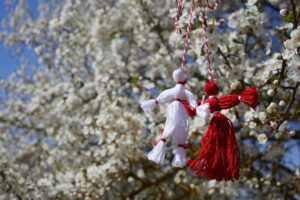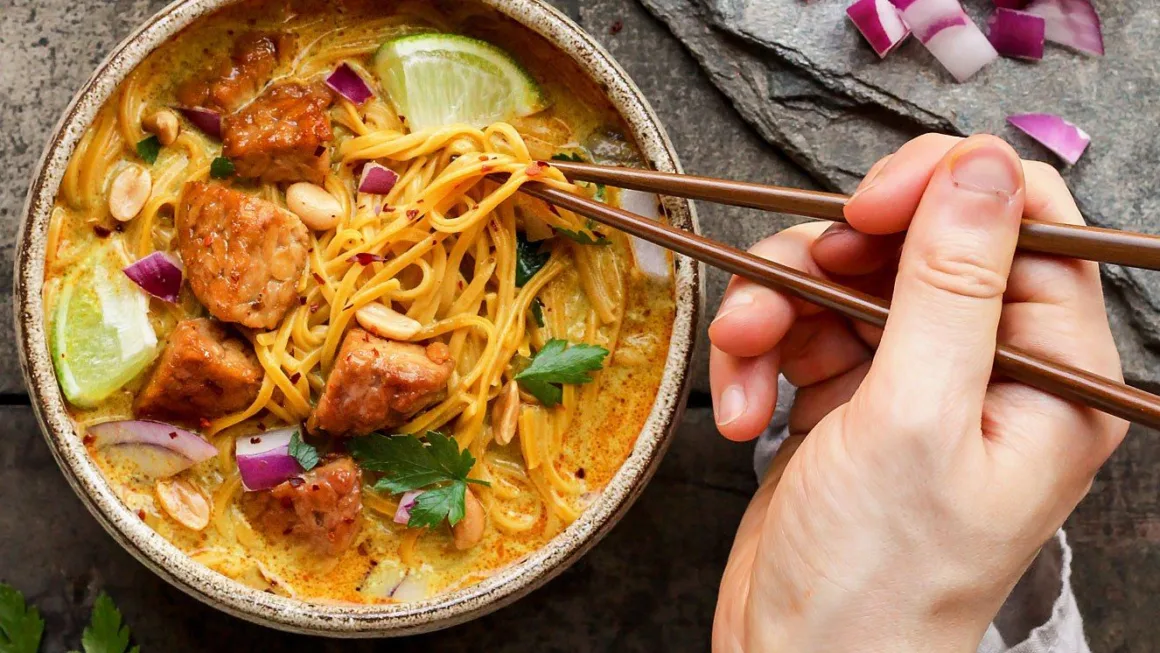Introduction:
Nowruz, also known as the Persian New Year, is a celebration deeply rooted in ancient history, culture, and tradition. As the harbinger of spring, Nowruz marks the beginning of the Persian calendar year and is celebrated by millions of people worldwide, transcending borders and cultural differences. This article delves into the rich tapestry of Nowruz, exploring its significance, customs, and the universal message of renewal and unity it embodies.
Origins and Significance of Nowruz:
Nowruz has its origins in Zoroastrianism, one of the world’s oldest religions, which was practiced in ancient Persia. The word “Nowruz” itself translates to “new day” in Persian, symbolizing the renewal of nature and the beginning of a new cycle of life. The celebration typically falls on the vernal equinox, around March 20th or 21st, marking the onset of spring in the Northern Hemisphere.
The festival of Nowruz is steeped in symbolism, reflecting themes of rebirth, rejuvenation, and the triumph of light over darkness. It is a time to bid farewell to the cold winter months and welcome the warmth and abundance of spring. The traditions associated with Nowruz vary across different regions and cultures but are united in their emphasis on renewal and new beginnings.
Customs and Traditions:
Nowruz is celebrated with a myriad of customs and rituals, each holding deep cultural significance. Preparations for Nowruz often begin weeks in advance, with families cleaning and decorating their homes, symbolizing the cleansing of the past year’s troubles and making way for new blessings.
One of the most iconic symbols of Nowruz is the Haft-Seen table, a traditional arrangement of seven symbolic items, each starting with the Persian letter “Seen” (س). These items typically include Sabzeh (wheat or barley sprouts), Samanu (sweet pudding), Senjed (dried fruit), Seer (garlic), Seeb (apple), Somāq (sumac berries), and Serkeh (vinegar). Each item represents a different aspect of life, such as rebirth, love, prosperity, and patience.
Another cherished tradition of Nowruz is the practice of visiting friends and family, exchanging gifts, and partaking in festive meals together. It is a time of joyous reunions and strengthening bonds with loved ones. In addition to social gatherings, Nowruz is also marked by various cultural events, including music, dance, and storytelling, showcasing the diversity and vibrancy of Persian heritage.
Universal Message of Unity:
Beyond its cultural and religious significance, Nowruz carries a universal message of unity, tolerance, and solidarity. It is a time when people of all backgrounds come together to celebrate the beauty of diversity and the shared values of hope and renewal.
Nowruz transcends geographical boundaries, bringing people from different faiths, ethnicities, and nationalities together in a spirit of harmony and goodwill. In an increasingly interconnected world, Nowruz serves as a reminder of our common humanity and the importance of fostering understanding and respect for one another.
Moreover, Nowruz embodies the values of environmental stewardship and sustainability, emphasizing the interconnectedness between humanity and the natural world. The rituals associated with Nowruz, such as planting trees and cleaning up communities, reflect a deep reverence for the earth and a commitment to preserving its beauty for future generations.
Conclusion:
Nowruz stands as a testament to the enduring power of tradition, culture, and community. It is a celebration of life, love, and renewal, inspiring people around the world to embrace change with optimism and resilience.
As we come together to mark the arrival of spring and the beginning of a new year, let us cherish the customs and rituals of Nowruz and honor the timeless values of unity, compassion, and hope that it embodies. In doing so, we not only pay homage to our shared heritage but also pave the way for a brighter and more inclusive future for all.
Title: Discovering the Enigmatic Charm of India: A Journey Through Its Culture, Heritage, and Diversity
India, a land of vibrant colors, rich history, and diverse cultures, has captivated the imagination of travelers for centuries. From the snow-capped peaks of the Himalayas to the sun-kissed beaches of Goa, from bustling metropolises to serene villages, India offers an unparalleled tapestry of experiences for every traveler. In this comprehensive guide, we delve into the enigmatic charm of India, exploring its cultural heritage, historical landmarks, natural wonders, and culinary delights.
### Unraveling India’s Cultural Tapestry
India’s cultural landscape is as diverse as it is captivating. With over 1.3 billion people belonging to various ethnicities, religions, and languages, India is a melting pot of traditions and customs. The country’s rich cultural heritage is evident in its festivals, dance forms, music, art, and architecture.
#### Festivals: Celebrations of Life and Spirituality
India is renowned for its vibrant festivals, which reflect the country’s deep-rooted traditions and religious diversity. Diwali, the festival of lights, celebrates the victory of light over darkness and is marked by fireworks, sweets, and colorful decorations. Holi, the festival of colors, heralds the arrival of spring and is celebrated with fervor across the country, with people dousing each other in colored powders and water. Other notable festivals include Eid, Christmas, Durga Puja, and Navratri, each offering a unique glimpse into India’s cultural mosaic.
#### Dance and Music: Expressions of Joy and Devotion
Indian classical dance forms such as Bharatanatyam, Kathak, Odissi, and Kathakali are not just performances but expressions of spirituality and storytelling. Accompanied by soul-stirring music, these dance forms have been passed down through generations, preserving India’s cultural heritage. Similarly, Indian music, with its diverse genres such as Hindustani classical, Carnatic, folk, and Bollywood, resonates with listeners worldwide, transcending language barriers and evoking emotions.
#### Art and Architecture: Testaments to India’s Glorious Past
India’s architectural marvels, from the timeless beauty of the Taj Mahal to the intricate carvings of Khajuraho temples, bear witness to the country’s illustrious past. The ancient caves of Ajanta and Ellora, the majestic forts of Rajasthan, and the exquisite palaces of Mysore showcase India’s architectural prowess and historical grandeur. Additionally, Indian art, with its rich symbolism and intricate designs, has flourished over millennia, leaving behind a legacy of exquisite paintings, sculptures, and handicrafts.
### Exploring India’s Historical Landmarks
India’s history is as vast and diverse as its cultural heritage, with a myriad of historical landmarks scattered across the length and breadth of the country. From ancient civilizations to colonial legacies, each monument tells a unique story of India’s past glory and resilience.
#### The Taj Mahal: Epitome of Love and Architecture
No visit to India is complete without witnessing the ethereal beauty of the Taj Mahal. Built by Mughal Emperor Shah Jahan in memory of his beloved wife Mumtaz Mahal, this UNESCO World Heritage Site is a masterpiece of Mughal architecture, renowned for its white marble facade, intricate carvings, and symmetrical gardens. As the sun casts its golden hues upon the monument at dawn and dusk, visitors are spellbound by its timeless allure, making it a symbol of eternal love and devotion.
#### Red Fort: A Symbol of India’s Mughal Legacy
Located in the heart of Delhi, the Red Fort stands as a testament to India’s Mughal heritage. Built by Emperor Shah Jahan in the 17th century, this imposing fortress served as the residence of Mughal emperors for centuries. Its red sandstone walls, intricate marble pavilions, and sprawling gardens narrate tales of grandeur and power, offering visitors a glimpse into India’s imperial past.
#### Hampi: Ruins of an Ancient Kingdom
Nestled amidst the rocky terrain of Karnataka lies Hampi, a UNESCO World Heritage Site and the erstwhile capital of the Vijayanagara Empire. Sprawling across an area of over 26 square kilometers, Hampi’s ruins boast of magnificent temples, royal enclosures, and intricately carved monuments, reflecting the architectural brilliance of the bygone era. Visitors can explore the iconic Virupaksha Temple, the majestic Vittala Temple with its musical pillars, and the awe-inspiring ruins of the Elephant Stables, immersing themselves in Hampi’s rich history and architectural splendor.
### Embracing India’s Natural Wonders
Beyond its cultural and historical treasures, India is blessed with an abundance of natural beauty, from lush forests and cascading waterfalls to pristine beaches and towering mountains. Whether it’s embarking on a wildlife safari, trekking through verdant valleys, or unwinding on secluded beaches, nature enthusiasts will find solace in India’s diverse landscapes.
#### The Western Ghats: Biodiversity Hotspot
Stretching across six states in western India, the Western Ghats are a UNESCO World Heritage Site and one of the world’s eight hottest biodiversity hotspots. Home to an array of flora and fauna, including endemic species such as the Malabar giant squirrel and the lion-tailed macaque, the Western Ghats offer unparalleled opportunities for trekking, birdwatching, and exploring pristine wilderness. Visitors can explore national parks such as Periyar and Silent Valley, trek to the scenic hill stations of Munnar and Coorg, or simply revel in the tranquility of the lush rainforests.
#### Ranthambore National Park: Land of the Tigers
Located in the state of Rajasthan, Ranthambore National Park is a haven for wildlife enthusiasts and conservationists alike. Spread over an area of 392 square kilometers, the park is renowned for its thriving population of Bengal tigers, as well as other species such as leopards, sloth bears, and sambar deer. Visitors can embark on safari adventures through the park’s rugged terrain, catching glimpses of these majestic predators in their natural habitat, while also enjoying the sight of ancient ruins scattered amidst the wilderness.
#### Andaman and Nicobar Islands: Tropical Paradise
Situated in the Bay of Bengal, the Andaman and Nicobar Islands are a picture-perfect destination for beach lovers and adventure seekers. With pristine white-sand beaches, crystal-clear waters, and vibrant coral reefs, these islands offer an idyllic retreat from the hustle and bustle of city life. Visitors can indulge in a variety of water sports such as snorkeling, scuba diving, and sea kayaking, or simply relax on the sun-kissed shores, soaking in the breathtaking vistas and serenity of the surroundings.
### Savoring India’s Culinary Delights
No journey through India would be complete without sampling its mouthwatering cuisine, which is as diverse as its cultural heritage. From aromatic spices and flavorsome curries to delectable street food and sweet treats, Indian cuisine tantalizes the taste buds and leaves a lasting impression on every palate.
#### North Indian Cuisine: A Gastronomic Delight
North Indian cuisine is characterized by its rich flavors, generous use of spices, and hearty dishes. From the creamy indulgence of butter chicken and the savory goodness of tandoori kebabs to the comforting warmth of dal makhani






